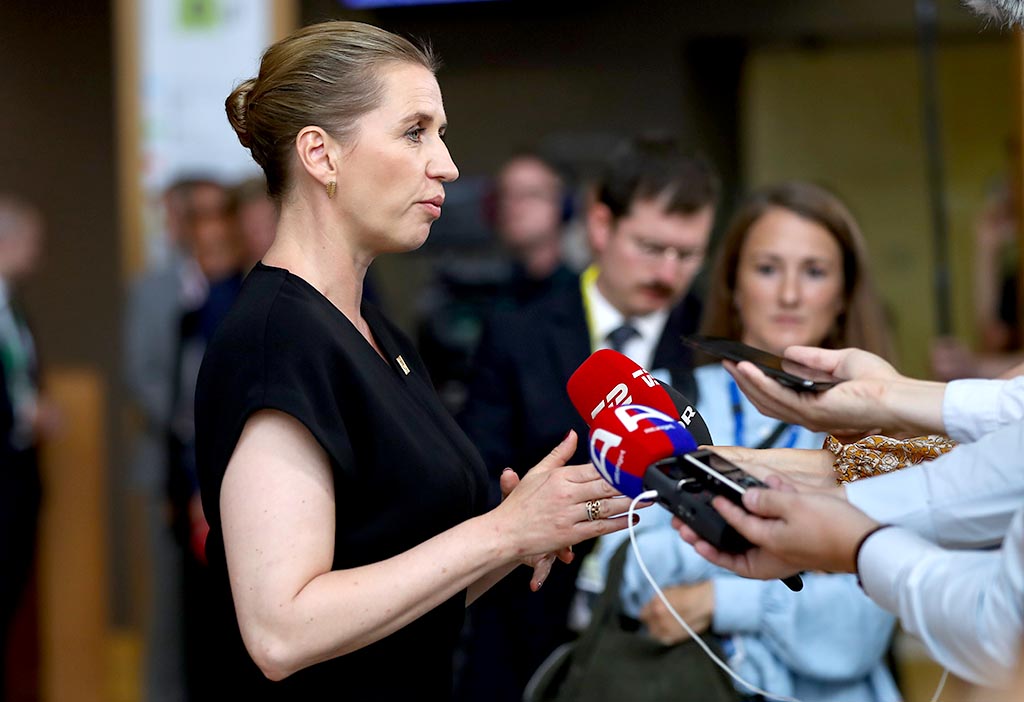By A.S.
Danish Prime Minister Mette Frederiksen announced during the parliamentary hearing on Danish immigration policy on January 22 that the government intends to significantly limit the number of asylum seekers in Denmark. The goal of is to preserve the country´s “social cohesion”.
Mette Frederiksen, a Social democrat, was decisive about the subject. On the hearing she said the following:
“Our goal is zero asylum seekers. We cannot promise zero asylum seekers, but we can establish the vision for a new asylum system, and then do what we can to implement it. We must be careful that not too many people come to our country, otherwise, our social cohesion cannot exist. It is already being challenged.”
She added that the politicians had the wrong approach in the best, as they did not manage to integrate the migrants into Danish society. On the other hand, a member of Danish People´s Party and a staunch opponent of multiculturalism, Pia Kjærsgaard, stated that the current Prime Minister herself implemented certain measures that eased immigration policy, including agreeing to allow refugees to remain in Denmark as long as they have a job and to allow asylum seekers whose applications have been rejected to stay in Denmark, accepting EU migrant quotas, and introducing a new child allowance that, according to Kjærsgaard, overwhelmingly goes to immigrant families.
Danish People´s Party also gave a statement regarding mass migrations:
“We note that, after decades of efforts, immigration to Denmark, especially by refugees and through refugee family reunifications, has been reduced. At the same time, we note that society is in many respects negatively affected by this immigration, which changes our country forever. We, therefore, note the need to establish that refugees and their families must return to their home countries whenever possible and that the legislation and the efforts by authorities in Denmark must actively support this.
“We further state that Danish immigration policy since 1983 has meant that too many people with a Muslim background live here who cannot or will not adopt Danish values and traditions but will maintain values that are miles away from the Danish ones and that challenge Denmark culturally, religiously, in terms of employment, economics and security.
“We, therefore, call on the government to take initiatives that encourage refugees living here with their families to return home as soon as possible.”
Denmark has been facing many problems that arose from mass migrations and islamization in the past several years. In 2016 the Danish Parliament adopted various measures to reduce the number of asylum seekers. Some of those measures were an increase in time requirement to three years for family reunifications for asylum seekers, and in time requirement before the awarding of permanent residency status, additional requirements such as the knowledge of Danish language, a 10% reduction in economic aid to asylum seekers, and also the police were given the power to confiscate from asylum seekers items of value to support the cost of their stay, among others.
In 2018, the Danish Parliament banned the burka that covers the whole face in public spaces. The law was introduced by the then center-right government and supported by both Social democrats and the Danish People´s Party. Anyone wearing a full-face veil would be fined approximately 130 euros, and anyone forcing another person to wear it would face up to two years in prison.
In 2020, the government established a new ambassadorial position and a task force to establish migrant reception centers in the third world, outside Europe. The government also proposed an amendment to the Foreigners’ Citizenship Act that would deny citizenship to jihadists and a new repatriation law that would ensure that more rejected asylum seekers were sent back to their homelands. And in the beginning of 2021, the government introduced draft legislation stating that all sermons in places of worship should be translated into Danish.
Denmark, with a population of 5, 8 million, has accepted approximately 40,000 asylum requests, mostly from Muslim countries, in the past several years. Apart from that in past Denmark has also accepted a large number of non-Western migrants, who weren’t asylum seekers. According to statistics, there are large migrant communities in Denmark from Syria (35,536); Turkey (33,111); Iraq (21,840); Iran (17,195); Pakistan (14,471); Afghanistan (13,864); Lebanon (12,990) and Somalia (11,282). Muslims currently represent 5, 5 % of the population in Denmark. If the migrations would completely stop they would reach 7, 6 %, with medium migrations 11, 9 %, and with high migration 16% by the year 2050.
Like many other European countries with high migrant populations, Denmark is facing the rise of crime and social tensions.

